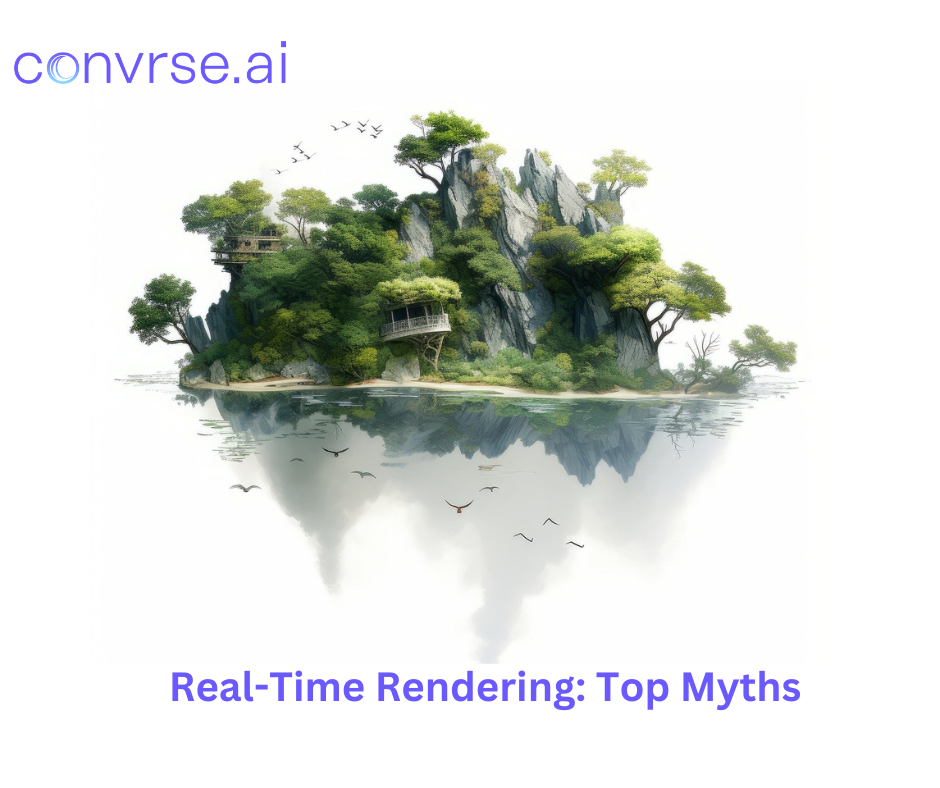Top Trends in Real-Time 3D for 2024
Real-time 3D is having quite a moment even beyond gaming and entertainment. Learn about top trends in real-time 3D, VR, AR and more in 2024 and see how they will shape the future.

The future of real-time 3D is tied strongly to the content consumption patterns of humans worldwide. And the future of content is immersive. As a consequence, the real-time 3D industry is having quite a moment. Beyond gaming and films, real-time 3D content has found its audiences in enterprises across architecture, education, training, construction, manufacturing and beyond. The result is stunning 3D visual content that looks better, performs better and engages better.
Here are some top trends expected to propel the real-time 3D industry forward in 2024:
1) Real-time rendering will continue to evolve
This year, Nvidia added RTX 4070 Ti to its RTX 40 series of GPUs whereas AMD Radeon introduced Radeon RX 7000-series. The GPUs offered a massive leap over the previous generations. Features like ray tracing and other RTX features sweetened the deal. Nvidia’s RTX 4070 Super and RTX 4080 Super are expected to launch early next year followed by additions to AMD Radeon RX 8000 Series and Intel Arc Battlemage. We can all expect to be shocked when it comes to what we think is possible in terms of rendering speed, quality and performance.
2) The rise of cloud-based rendering
Driven by affordability, new payment models, better CPUs and GPUs in the cloud, enhanced support for new hardware and software, the 3D industry is seeing the biggest adoption of cloud-based rendering. The entry of big players has further instilled confidence. Some examples include Nvidia’s Omniverse Cloud, a SAAS suite of cloud services for artists, developers and enterprise teams to design, publish, operate and experience metaverse applications anywhere; and Microsoft’s Azure Remote Rendering for Meta Quest 2, and Quest Pro to allow developers to render complex 3D content in the cloud and stream it to those VR headsets in real-time. We can expect similar developments to continue in 2024.
3) Increased use of AI and machine learning in 3D creation
One of the most exciting developments across industries reached 3D in the form of generative AI and machine learning (ML). From modeling (Meta's Make-A-Scene) to texturing (Materialize's AI Materializer), from animation (Autodesk MotionBuilder) to lighting (Unreal Engine 5), to post-processing ( NVIDIA RTX Remix) - AI has been everywhere. In 2024, we can expect much better AI implementation, at a faster and a bigger scale, coming from smaller players due to lower barriers to entry.
4) The convergence of AR and VR and the rise of XR
IDC had rightly predicted 2023 to be the slow year for AR/VR headset shipments and the adoption to start showing an increasing trend in 2024 to reach 30.3 million units sold globally by 2027. The release of Meta Quest 3 rekindled the interest and Apple’s Vision Pro took things to the next level this year. In 2024, we can expect AR, VR and other XR technologies to merge and create truly breathtaking and seamless immersive experiences. Enterprises will be the most enthusiastic patrons of these experiences and will curate them for use cases far beyond any we have seen. This will begin to shape the metaverse as we imagine it.
5) The State of Consumer Metaverse Economy
Having said that, there will be more users than ever before on platforms like Roblox and Fortnite. In 2024, these platforms, driven by tech advancements, will see huge volumes of native content. Brands will no longer look to create stores or branded experiences on these platforms but instead look to partner with the most successful native experiences, much like influencer marketing on popular social media. This will pave the way for meaningful collaborations and the rise of the creator economy of the future.
6) The Rise of Enterprise Metaverse
Metaverse strategy has found a key focus in enterprises. Retail and automotive metaverses emerged as top use cases in 2023 with brands curating immersive product experiences for their customers to engage with virtually. We saw virtual showrooms, virtual events, virtual experience centers etc from brands. In 2024, we can expect use cases like training and collaboration, and virtual prototyping and product design to come to the fore. Enterprises who have invested in a metaverse strategy this year should see some returns towards the end of next year in terms of enhanced customer engagement, better brand recall and improved bottom line.
7) The Rise of 3D Digital Twins
3D Industrial Digital Twins are revolutionizing industries by creating hyper-realistic virtual replicas of physical systems. These digital twins leverage AI and real-time data to continuously monitor and improve industrial processes, offering benefits like improved training, smarter decision-making, predictive maintenance, and overall boosted operational performance while reducing costs and environmental impact.
Read More:


About Author
Vikrant Singh, Cofounder & CEO, Convrse.ai
Vikrant is a seasoned entrepreneur, a 3D nerd and CEO at Convrse.ai. He has built and managed many small ventures, wearing multiple hats in business development, product development and sales & marketing. Amongst the accomplishments he holds close to his heart are creating over 200 immersive experiences for brands in the VR industry; winning the Best VR Startup award in 2021; and being the only Web 3.0 startup featured in the prestigious Your Story Tech30 list. At Convrse, Vikrant leads efforts to revolutionize digital interactions for the new era of internet with the use of real-time 3D. Vikrant is a graduate from IIT-Guwahati.

The world's smartest 3D model optimizer
Convrse.ai is a cloud-based 3D optimizer, with 1000+ users, that supports 40+ file formats including CAD files and comes with a file viewer, heatmap and a unique selective optimization feature.






